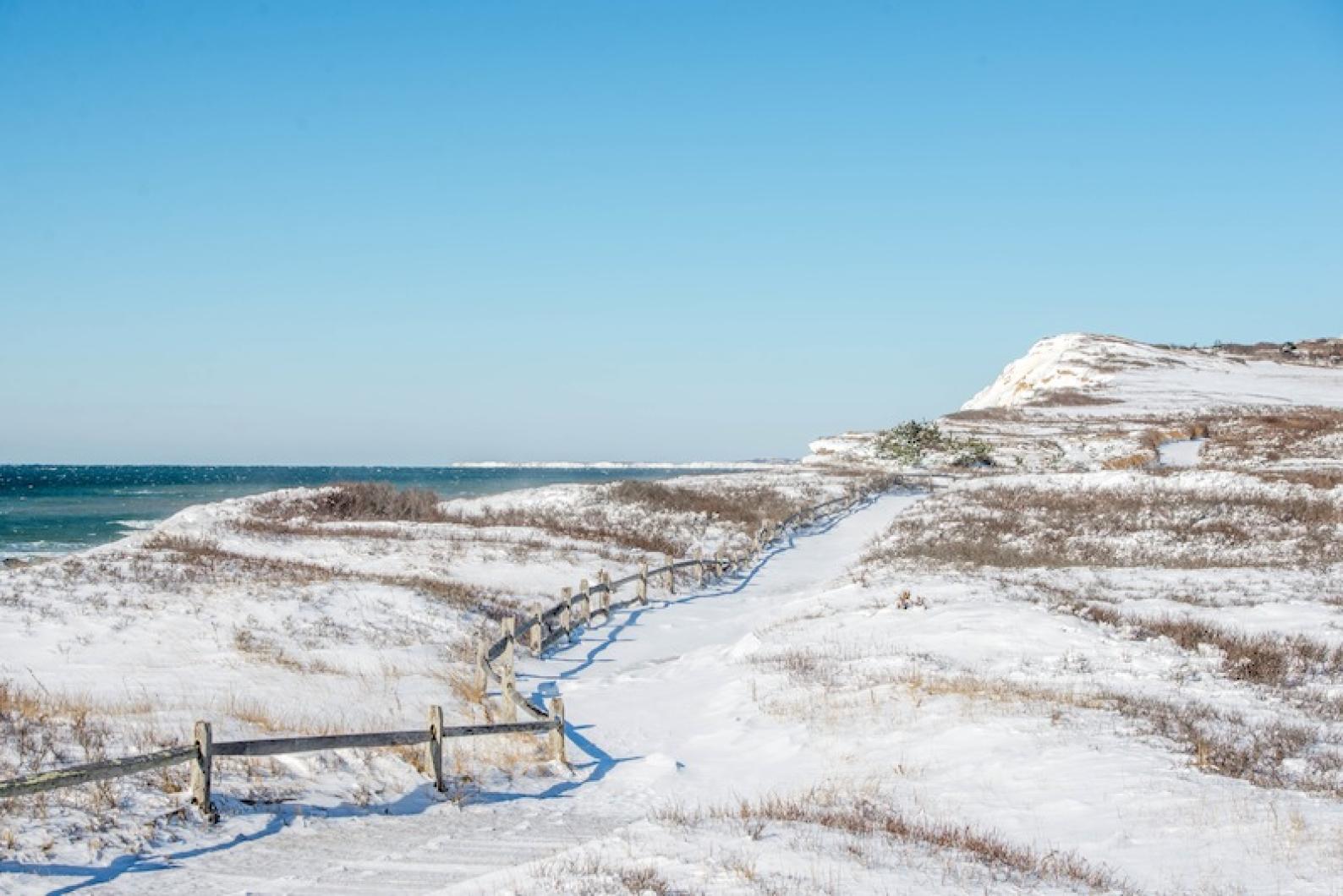British poet Edith Sitwell took winter to heart. She believed it “is the time for comfort, for good food and warmth, for the touch of a friendly hand and for a talk beside the fire: it is the time for home.”
That exactly sums up my feelings during snowstorms — stay warm, cozy and well fed — and the needs of subnivian zone dwellers.
The subnivian (“sub” meaning below, and “nive” meaning snow) zone describes the seasonal microenvironment under the surface of the snow and above the ground. Last weekend’s storm brought more than a dozen inches of snow to many areas of the Island and created this special, but ephemeral, habitat. Who knows how long it will last or when it will melt away, but as long as there is at least six inches, there is life between the snow and earth.
At six inches of snow or more, interesting changes occur below the snow’s surface. As the white stuff builds up, it actually insulates the ground and acts like a blanket (a knowledge that the Inuit capitalize on in the construction of their igloos), and this blanketing effect can warm up and melt areas just above the soil and vegetation.
Roots, sticks and other natural objects will support the snow and create pockets of space and air. These create perfect hideaways and enclaves for some animals that remain active during the winter.
Small mammals, especially mice, voles and shrews, make the subnivian zone their winter homes, using these pockets and creating their own. And it is not the peace of dormancy or hibernation that describes their behavior. It’s very busy down there. Under the snow, activity abounds and needs are met. Tunnels are created for moving around and areas for resting, storing food, eliminating waste, and caching food are established, and the battle of life goes on.
In the subnivian zone, warmth is not found from a cozy hearth, rather from the ground’s own warmth and the snow’s insulating properties, so that relatively warm temperatures of about 32 degrees can be maintained despite the colder and windier conditions above the snow. And an animal’s own body heat can contribute to the warmth.
Food below the snowfall is surprisingly plentiful. In addition to the seeds, bark, grass and other vegetation trapped under the snow, there is a feast of proteins for these animals. Consider a study from Canadian scientists that found a plethora of insects in the subnivian zone. They counted 19 species of spiders, 15 species of mites, 62 types of beetles, 16 springtail varieties, 32 ant collections and two species of centipedes — making it a most plentiful insect delicatessen.
And though one might expect it to be a bit suffocating under all those layers of snow, oxygen is plentiful due to the air spaces and the entry and exit holes created by the subnivian residents. Carbon dioxide leaves in the same way, maintaining a healthy breathing zone. Look for these holes near tree trunks, beside rocks and under shrubs where they most often originate.
But not all living under the snow will always be safe and sound. Predators can raid these underground villages from above and below. A hole in the surface of the snow can be a fatal tell-tale giveaway. Hawks and owls can also hear scurrying from up to 30 yards away for some species, and can attack feet first for a meal. In colder, off-Island places where snow will remain for longer periods and these predators exist, weasels can squeeze into tunnels and overtake the residents, and larger mammals such as foxes, coyotes and wolves will dive in for a kill. And, of course, the warmer weather we are now experiencing will melt away these underground condos and leave residents again vulnerable.
Charles Dickens had the correct attitude for appreciating the snows that this time of year brings and just as quickly takes away for subnivian habitats: “Look round and round upon this bare bleak plain,” he wrote, “and see even here, upon a winter’s day, how beautiful the shadows are! Alas! it is the nature of their kind to be so. The loveliest things in life, . . . are but shadows; and they come and go, and change and fade away, as rapidly as these!”
Suzan Bellincampi is director of the Felix Neck Wildlife Sanctuary in Edgartown, and author of Martha’s Vineyard: A Field Guide to Island Nature.







Comments
Comment policy »